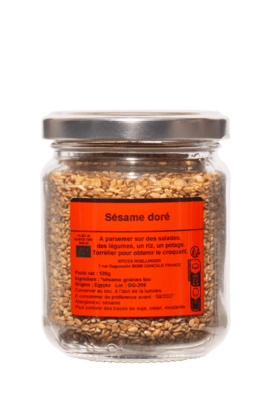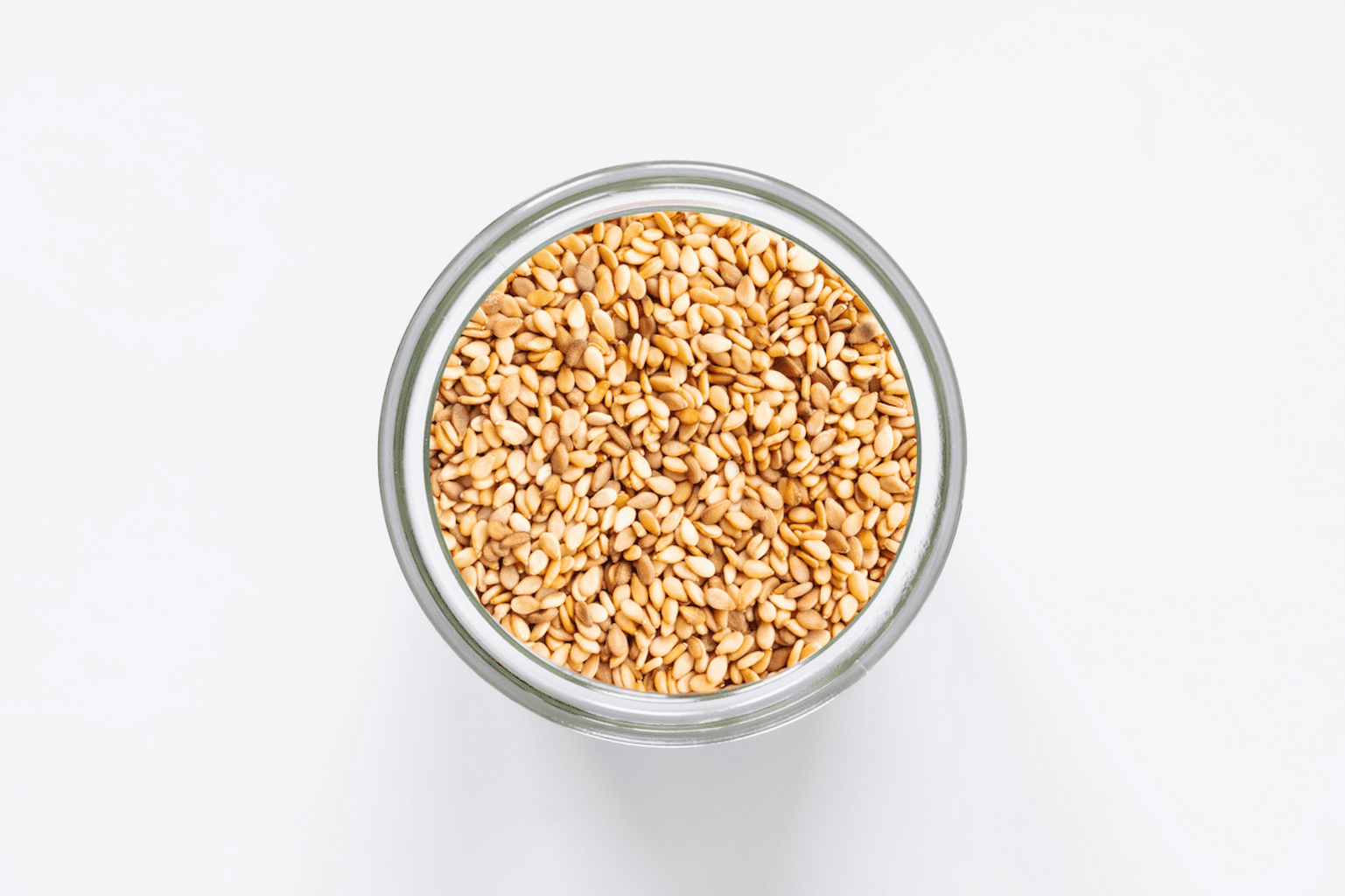Golden sesame

Recommendations
Lightly toast the seeds in a dry skillet to enhance their fragrance and flavor.
-
Allergens
*Sesame
May contain traces of celery, mustard, soy. - Origin Egypt
- Storage / Use In a cool, dark, dry place.
Olivier Rœllinger's words
In my kitchen at the restaurant le Bricourt, I liked to pair the toasted seed with fish cooked just until golden, such as small sole or roasted sea bass. At home, I also use it to make caramels and nougatines, or sometimes a praline with almonds and hazelnuts.
Story
Sesame seeds come in different colors : white, off-white, red, brown, and black. White sesame seeds are the most common. Brown sesame seeds are in fact white sesame seeds that have not been hulled.
Sesame is thought to be native to India and to have spread from there to Africa, Mesopotamia, and China. Some believe sesame seeds actually come from Africa. Regardles of sesame’s origins one thing remains true: the oleaginous seed has been an important crop throughout Asia and the Middle East since the beginning of time. Sesame seeds have been cultivated in Pakistan for over 3,000 years. In ancient Greece, sesame seeds were used for medicinal purposes. They were also found in Egyptian King Tut’s tomb.
In Japan, toasted sesame seeds are crushed with salt to make the gomasio spice blend. In the Middle East, sesame seeds are ground into tahini, a creamy purée hat is used as a base for sauces that are seasoned with lemon, pepper, garlic, coriander, and nigella. Sesame seeds are also combined with sumac and thyme to make za’atar blends. In Middle Eastern and North African cuisines, sesame seeds are often used to flavor cakes and sweets including halva (a fudge-like dessert made with honey and almonds).
Sesame seeds are said to awaken or ‘open up’ diners’ palates. Hence famous ‘Open Sesame !’ line in 1001 Nights, one might say.
Sesame oil is highly sought after by cooks and chefs around the globe. When cooking with sesame oil, opt for neutral, non-toasted varieties which are rich in polyunsaturated fats. Sesame oil has a high smoke point and won’t go rancid, making it ideal for all types of recipes.
